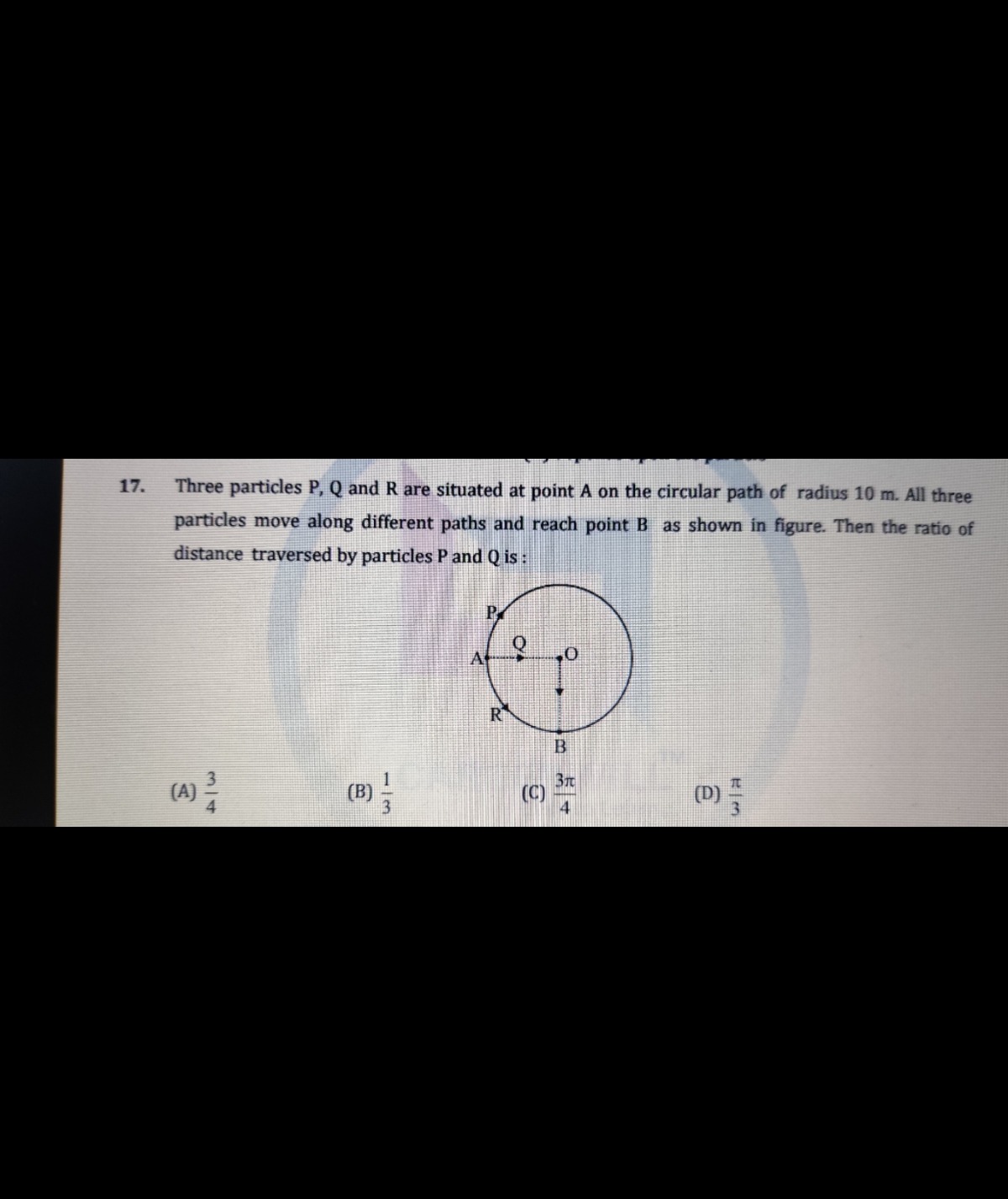Question
Question: Three particles P, Q and R are situated at point A on the circular path of radius 10 m. All three pa...
Three particles P, Q and R are situated at point A on the circular path of radius 10 m. All three particles move along different paths and reach point B as shown in figure. Then the ratio of distance traversed by particles P and Q is:

43
31
43π
3π
(C) 43π
Solution
The problem asks for the ratio of the distance traversed by particles P and Q. All particles start at point A and reach point B. The radius of the circular path is given as 10 m.
- Distance traversed by particle P (DP):
Particle P moves along the circular path from point A to point B. From the figure, point A is on the left side of the circle, and point B is at the bottom. Moving from A to B along the circumference in the direction indicated (counter-clockwise), the particle covers three-quarters of the circle. The total angle in a circle is 2π radians or 360∘. Three-quarters of a circle corresponds to an angle θ=43×2π=23π radians. The distance traversed along a circular arc is given by s=rθ, where r is the radius and θ is the angle in radians. Given radius r=10 m. Therefore, DP=10×23π=15π m.
- Distance traversed by particle Q (DQ):
Particle Q moves along a straight line path from point A to the center O, and then from the center O to point B. The distance from A to O is the radius of the circle, so AO=r=10 m. The distance from O to B is also the radius of the circle, so OB=r=10 m. The total distance traversed by particle Q is the sum of these two straight line segments: DQ=AO+OB=r+r=2r. DQ=2×10=20 m.
- Ratio of distances traversed by particles P and Q:
The ratio is DQDP. Ratio = 2015π. Simplifying the fraction: Ratio = 43π.
Comparing this result with the given options, option (C) matches our calculated ratio.
The final answer is (C).
Explanation:
Particle P travels along the circumference covering 3/4 of the circle, so its distance is r×(3π/2). Particle Q travels along two radii (A to O and O to B), so its distance is 2r. The ratio of these distances is (r×3π/2)/(2r)=3π/4.
